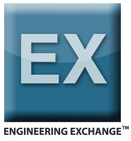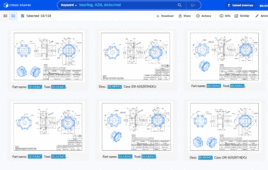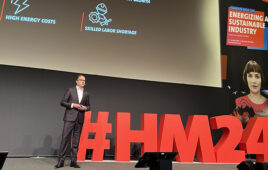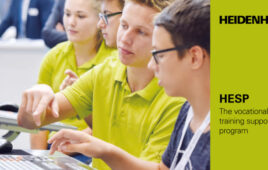By Adam Scichitano, Engineering Manager, Dynacast, Lake Forest, CA and Mike Guilfoyle, General Manager, Dynacast Tooling Division, Germantown, WI
What’s the best way to rapid prototype a die cast component? Engineers with some die casting experience may reflexively answer “spin casting” or “machining.” A better answer, however, would be “die casting.”

Prototypes of this aluminum booster pump bracket were prototyped in a spin-cast zinc alloy (left) to produce a quick model suitable for testing fit. The prototype’s mechanical properties, however, were not suitable for true functional testing.
That’s right. It turns out that the ideal way to prototype a die cast part is actually to die cast it.
While spin casting and machining can produce great looking prototypes, neither process produces parts whose mechanical properties truly replicate those of a production die casting. The reason why comes down to process-dependent microstructure differences.
Even when they employ the same or very similar metal alloys, each of these three prototyping processes produces parts whose grain structure and density differ from one another. With die casting in particular, the part’s final microstructure depends heavily on the interaction of the individual casting alloy with the process conditions, the tooling and the part geometry.
Skin Effects
The microstructure differences that matter most from a strength standpoint can be found on the part surface. Die cast components derive a significant amount of their tensile strength and fatigue life from the finely grained, non-porous “skin” that forms as the pressurized molten metal fills the die and cools. Skin thickness is typically about 0.5 mm, though the exact transition point between the skin and part interior can be somewhat hazy from a metallurgical standpoint.
Machined prototypes lack a skin altogether and are the weaker for it. Strength studies of both zinc and aluminum die casting alloys have quantified skin’s contribution to strength and effects of removing that skin through machining:
A study conducted by the U.S. National Energy Technology Laboratory, Determination of Mechanical Properties of Die Cast Zinc Alloys for Automotive Applications, examined the effects of machining away all or part of the skin from die cast zinc specimens. Removing the skin from the specimens lowered the values for offset yield strength by nearly 10% and also reduced other key mechanical properties (See Table 1.)

The flexural properties of a Die Cast Alloy 5 were tested with three different skin conditions–fully removed, skin oriented to top surface and skin oriented to bottom surface. Not only the presence of the skin made a difference in performance but also the orientation of the skin relative to the loading. Keeping skin on the bottom was the orientation best suited for tensile loading.
A technical paper from Briggs & Stratton, The Significance Of The Die Cast Skin Pertaining To The Fatigue Properties Of ADC12 Aluminum Alloy Die Castings, found that aluminum die castings lost more than 10% yield strength and 39% of their fatigue strength when their skin was machined away.
Unlike machining, the spin casting process does form a skin of sorts on the part surface. That skin, however, is not the metallurgical equivalent of a die-cast skin and does not impart as much strength. In fact, even with its limited skin, spin casting tends to fare worse than machining in the strength department. The reason is that spin casting relies on centrifugal force within a spinning mold to pack out the part. This low-pressure filling method produces parts that are less dense, and strong, than their machined or high-pressure die cast counterparts.
More Than Skin Deep
Not all of the strength discrepancies between die-cast, spin-cast and machined components relate to the skin effect. Other factors matter too:
Part design. Because it determines how parts fill and cool, part geometry affects porosity, grain structure and internal stress states. Stress concentrators, such as those found at sharp corners, are also geometry dependent and can reduce a given part’s working strength. Parts whose geometry has been optimized for die-casting–in terms of filling, cooling and ejection–may have substantially different microstructures and internal stress states than comparable machined or spin-cast parts.
Materials Selection. Casting and machining alloys all have intrinsic composition differences that can result in dissimilar grain structures. The danger when prototyping a die-cast production part in a different process is that the grain structure, and thus the strength, will differ.
Process Conditions. The high temperatures, high-pressures and aggressive cooling associated with die-casting fundamentally produce parts whose grain structures differ from low-pressure, low-temperature processes like spin casting or machining. These process-related microstructure differences are yet another contributor to the strength imbalance between these processes.
The interplay between part design, manufacturing factors and the skin effect can be complex. In our experience, though, we find that die-cast zinc prototypes consistently exhibit a 10 to 20% strength advantage over comparable machined or spin-cast prototypes. Aluminum die-castings show a similar strength advantage.
While 20% strength penalty may not pose problems for cosmetic prototypes, die cast prototypes should be considered a must whenever functional or fatigue life testing is on the agenda.
Trying to conduct functional tests on prototypes that don’t accurately represent the properties of the production die casting contribute to costly design traps. You may end up over-engineering the die cast part based on the inferior strength properties of a machined or spin cast prototype. Or you may mistakenly rule out die casting and end up with a less economical production process.

Prototypes of these zinc-alloy key fob components were spin cast before the part went into production. The spin cast and production part look similar, but the production component (right) has better strength properties.
Die cast prototypes are now practical
For all its advantages, prototyping on real die-castings machines was considered impractical just a few years ago because of the expense and lead times needed to develop dies. Spin casting and machining, which don’t require hard tooling, became the default prototype methods. In recent years, advances in manufacturing and design technologies have changed the economics of building dies for prototype purposes.
One such technology is high-speed CNC machining, which now makes it feasible to create working die cast tools much more quickly. The most efficient tooling operations routinely build four-slide dies in as little as two weeks–or sometimes even faster for customers with urgent needs and simple parts. Just a few years ago, tooling lead times would have been more like 8 to 10 weeks, which is far too slow for prototyping purposes.
The widespread use of 3D design and simulation software has also played a role in improving the economics of prototype die cast tooling. With features like automatic parting line detection and core-and-cavity tools, modern 3D CAD systems can reduce the engineering time needed to design die cast tooling from days to hours. And FEA software, by handling initial prototyping “virtually,” reduces the risk that a subpar design concept will ever make it to hard tooling.
Cutting a tool for prototyping may not be worth the effort in every case. Some prototypes need to play a only cosmetic role. Both spin casting and machining can be quick, inexpensive ways to produce these visual parts, but these methods really are just for show.
Tooling Strategies
The need to create hard tooling early in the design process can pose a barrier to die cast prototypes. Keep in mind, though, that the time and cost that go into the prototype tooling will dramatically reduce the time and cost needed to build the production tool.
Here’s a look at two tooling development strategies that can help die cast prototypes lay the groundwork for production tooling:
• Pull Ahead Tooling. When there is no doubt that the part will ultimately be die cast, consider producing elements of the production tool concurrently with the prototypes. These “pull-ahead” tools typically combine a single prototype cavity with production die frames and other non-cavity elements. Upon completion of the prototyping work, the production cavity or cavities are created and dropped into a die frame that’s ready to go.
• Simplified Tooling. For jobs in which die-casting is not a certainty, it usually makes more sense to build a dedicated prototype tool rather than a pull-ahead tool. Prototype tooling costs can be kept to a minimum eliminating cast-in part features that would require side actions or otherwise increase the complexity of the die. These features can simply be machined into the prototypes parts if needed for functional testing purposes.
Dynacast Tooling
www.dynacast.com
::Design World::
Filed Under: Digital manufacturing, Die casting






Tell Us What You Think!